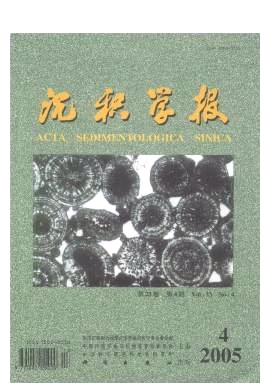HTML
| [1] | 1 黄胜,韩乃斌,钟秀娟. 长江口拦门沙淤积分析[A].北京:水利学会,1980.1-10. 2 黄胜. 长江河口演变特征[J].泥沙研究,1986,(04):1-12. 3 钱宁,张仁,周志德. 河床演变学[M].北京:科学出版社,1987.268-270. 4 李九发,沈焕庭,徐海根. 长江河口底沙运动规律[J].海洋与湖沼,1995,(02):138-145. 5 Li Jiufa,Zhang Chen. Sediment resuspension and implications for turbidity maximum in the Changjiang estuary[J].Marine Geology,1998.117-124. 6 李九发,何青,张琛. 长江河口拦门沙河床淤积和泥沙再悬浮过程[J].海洋与湖沼,2000,(01):101-109. 7 潘定安,孙介民. 长江口拦门沙地区的泥沙运动规律[J].海洋与湖沼,1996,(03):279-286. 8 潘定安,沈焕庭,茅志昌. 长江口浑浊带的形成机理与特点[J].海洋学报(中文版),1999,(04):62-69. 9 张志忠,阮文杰,蒋国俊. 长江口动力絮凝沉降与拦门沙淤积的关系[J].海洋与湖沼,1995,(06):632-638. 10 沈焕庭,朱慧芳,茅志昌. 长江河口环流及其对悬沙输移的影响[J].海洋与湖沼,1986,(01):26-35. 11 沈焕庭,李九发,金元欢. 河口涨潮槽的演变及治理[J].海洋与湖沼,1995,(01):85-89. 12 沈焕庭,潘定安. 长江河口最大浑浊带[M].北京:海洋出版社,2001.28-51. 13 沈金山,朱珍妹,张新琴. 长江口南槽拦门沙的成因和演变[J].海洋与湖沼,1983,(06):582-590. 14 陈吉余,恽才兴,徐海根,董永发. 两千年来长江河口的发育模式[J].海洋学报(中文版),1979,(01):103-111. 15 Chen J Y,Zhu S Z,Lü Q R,Zhou Y Q,He S L. Descriptions of the morphology and sedimentary structures of the river mouth bar in the Changjiang estuary[M].New York:Academic Press,1982.667-675. 16 Chen J Y,Zhu H F,Dong Y F,Sun J M. Development of the Changjiang estuary and its submerged delta[J].Continental Sheff res,1985.47-56. 17 陈吉余. 长江口拦门沙及水下三角洲的动力沉积和演变[J].长江流域资源与环境,1995,(04):348-355. 18 Chen Jiyu,Li Daoji,Chen Banglin,Hu Fangxi,Zhu Huifang,Liu Cangzi. The processes of dynamic sedimentation in the Changjiang estuary[J].Journal of Sedimentary Research,1999.129-140. 19 刘宝珺. 沉积岩石学[M].北京:地质出版社,1980.307-320. 20 杨世伦,贺松林,谢文辉. 长江口九段沙的形成演变及其与南北槽发育的关系[J].海洋工程,1998,(04):55-65. 21 王永红. 长江河口涨潮槽的形成机理与动力沉积特征[D].上海:华东师范大学,2003. 22 刘国贤,杨松林,周义华. 用210Pb法测定长江口区的沉积速率[J].海洋地质与第四纪地质,1984,(01):113-116. |






 DownLoad:
DownLoad: